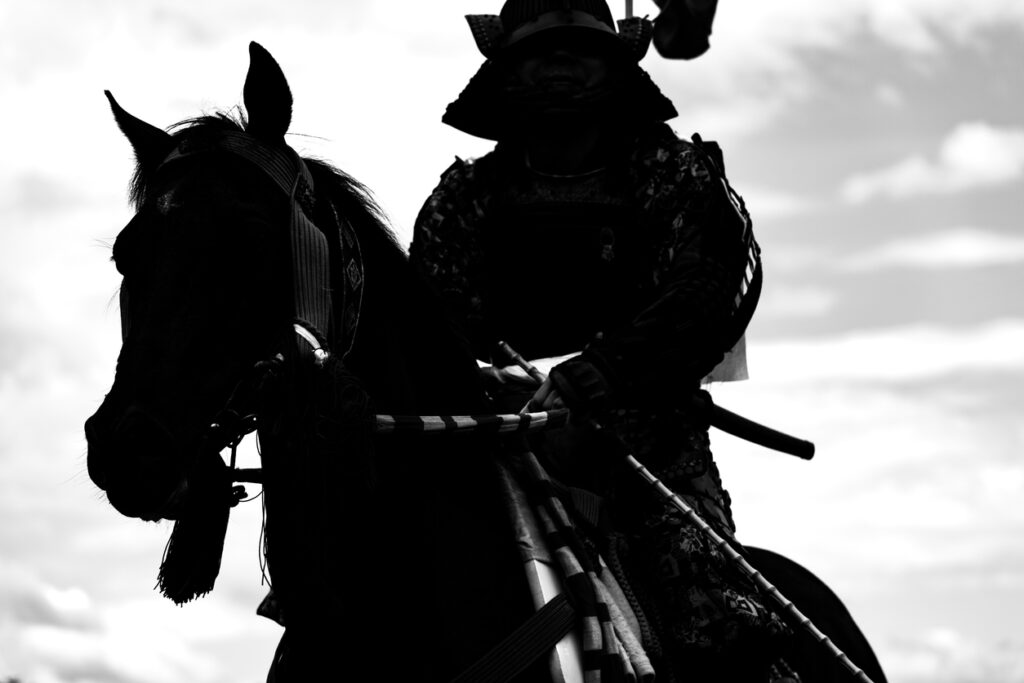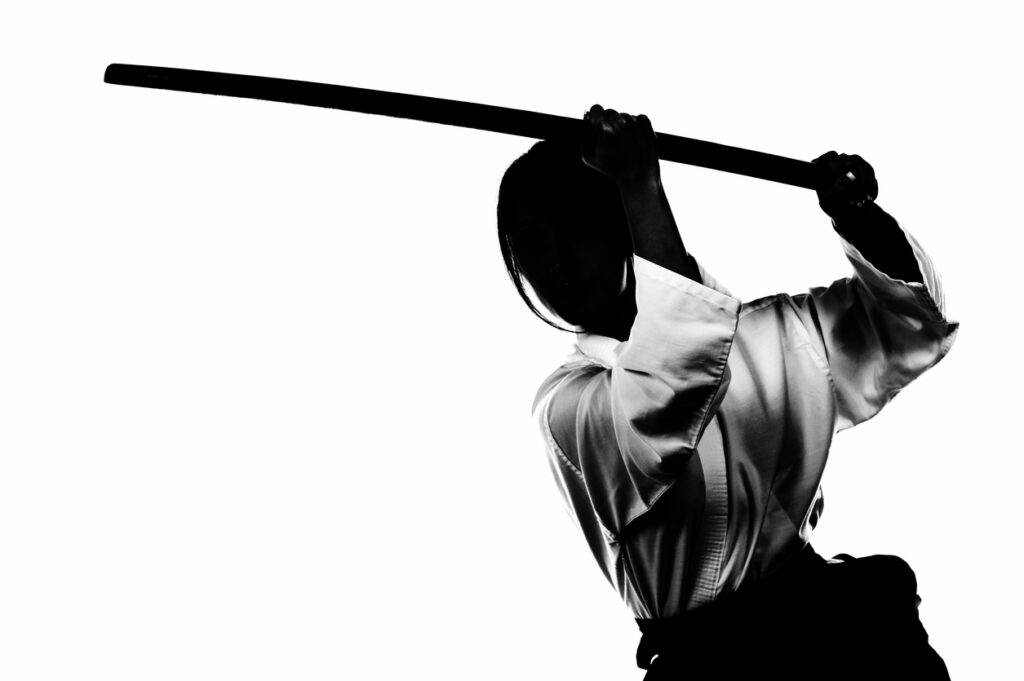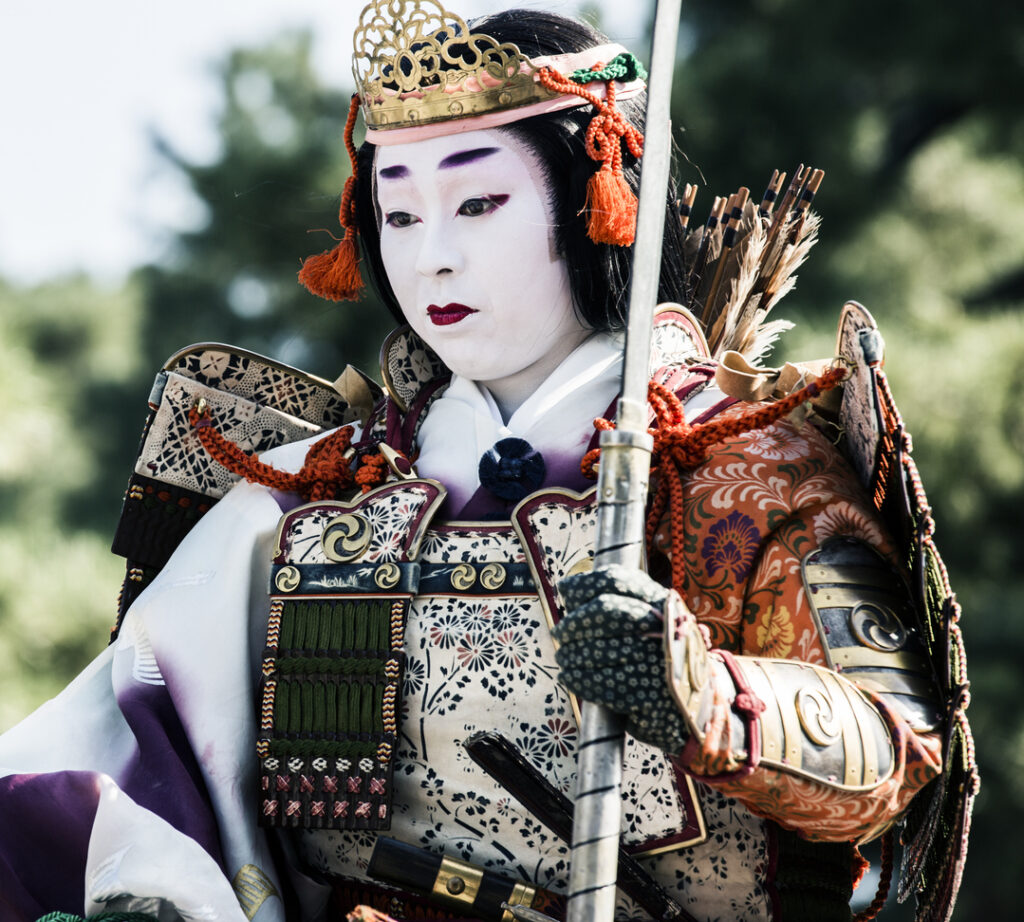Women Samurai in Japanese History
Learn About The Bold And Brave Women Warriors In Japan’s Past
Return to the world of samurai and learn about the women warriors who defended homes and created long-lasting legacies.
Following the critical and commercial success of Ghost of Tsushima, a video game centered on the Mongol invasions of Japan, Sucker Punch Productions has announced a follow-up: Ghost of Yotei. Set several centuries later in northern Japan, gamers will play as Atsu, a dual sword-wielding female warrior.
Unfortunately, there is a vocal gendered backlash online about the inclusion of Atsu over the previous male protagonist, Jin. Nevertheless, her inclusion as a main character gives us an opportunity to learn more about women fighters in Japanese history. Also, although Atsu has not been identified as a samurai per se, we’ll be focusing on samurai because of their pop cultural power. So, keep reading for a quick primer on these women warriors, their duties and their experiences on the battlefield.
Did Women Samurai Exist?
The short answer is yes. Throughout several periods of Japanese history, women have held the status of samurai. But before delving deeper, we have to cover a few points.
What Were Samurai?
 © Photo by iStock: Josiah S
© Photo by iStock: Josiah SWhen we think of samurai, images of battle-hardened, stoic, sword-wielding warriors often come to mind. This makes sense based on most Western popular culture, which equates samurai with warriors.
In reality, however, the role of samurai in Japanese history changed over time. The word samurai comes from the Japanese verb, saburau (to serve). Their status in Japanese society depended on the period and context. During the Heian period (794-1185), for example, samurai were mid-ranking members of the imperial court who served higher-ranking members and the imperial family. Although samurai duties may have included combat, they were, for the most part, civil servants.
By the Edo period (1603-1868), samurai had become the highest of the four social classes. They were ahead of farmers, artisans and merchants. But there were ranks within the samurai status, too. This status affected all aspects of daily life, from occupation and place of residence to clothes and income. And, in an age of relative peace, samurai roles shifted increasingly away from fighting actual battles.
Yet, because our perception of samurai continues to be one based on the battlefield, we’ll mainly deal with that aspect of female samurai life.
The Duties of Female Samurai
 © Photo by iStock: Gerville
© Photo by iStock: GervilleFemale samurai had varying experiences with combat and their roles were dependent on the place.
Combat Training
During the Edo period, women who belonged to the samurai class were required to undertake martial training, often learning how to wield a naginata (curved blade at the end of a long staff). However, the intensity of that training greatly depended on the region. For example, in some less wealthy areas, samurai women were encouraged to take up sewing and literacy training instead to benefit the economic status of the family. Meanwhile, in Mito (Ibaraki), using the naginata was more based on spirituality and discipline than actual combat. But, as we’ll see in the cases below, some women were proficient in the art of war and excelled on the battlefield too.
Defending the Home
Samurai women and men learned the techniques of war to protect their homes. Our sources for female participation in large-scale conflicts are scarce, but some exist. If and when women did take up arms, it was much more likely in smaller encounters, like warding off an intruder, and such small-scale events often escape the historical record.
Female Samurai in Japanese History
 © Photo by iStock: aluxum
© Photo by iStock: aluxumAlthough few historical sources exist about women samurai, several female fighters have had a lasting influence on Japanese culture.
Tomoe Gozen
Tomoe Gozen is one of the most famous female warriors in Japanese history. Much of our information about her comes from The Tale of Heike, an oral epic that covers the events of the Genpei War (1180-85).
There are many details about Tomoe Gozen’s military career in the epic. She once led 1,000 cavalry members into battle at Tonamiyama (Toyama). She also decapitated a powerful adversary in her final battle at Awazu (Shiga). In the centuries since she laid down her arms, her legacy has only grown. In addition to her role in The Tale of Heike, Tomoe Gozen has been immortalized in a noh play about her life and several works of ukiyo-e.
Lady Ishikawa
For much of Japan’s Middle Ages, the Ouchi Clan was one of the most powerful families in western Japan. Although the clan was largely defeated by the mid-1500s, Ouchi Teruhiro sided with Otomo Sorin, the leader of Bungo Province (Oita). In 1569, Ouchi led an offensive to capture Koromine Castle (Yamaguchi) in an effort to restore some lost prestige.
Wife of a member of the Ishikawa clan, Lady Ishikawa put on kattchu (traditional samurai armor) and picked up her naginata to defend the castle while her husband was in Kyushu fighting Otomo. With her female attendants at her side, Lady Ishikawa rallied the forces left at the castle and successfully held off Ouchi for 10 days. According to some accounts, she also led a charge to face Ouchi head-on. Ultimately, he retreated and later committed suicide. Lady Ishikawa was commended by Mori Terumoto, another powerful clan leader and future founder of Hiroshima, for her service.
Joshigun
The Boshin War (1868-69) was a key conflict of the Meiji Restoration, an event that resulted in the transfer of power from the shogunate to the emperor. On one side was the new imperial Japanese army headed by the new Meiji emperor and loyal clans from western Japan. After taking control of both Kyoto and Edo (renamed Tokyo), imperial forces set their sights on the final vestiges of resistance in northern Japan. Alongside thousands of other pro-shogunate fighters, women from Aizu fought in the bloody Battle of Aizu.
Aizu women were equally trained in martial arts and warfare. With the imperial military quickly advancing on Aizu-Wakamatsu’s Tsuruga Castle, many residents regardless of gender fled to the castle, escaped to the countryside, committed mass suicide or tried to defend against the invaders. One group of female samurai formed the joshigun (women’s army). Made up of about 20-30 female samurai ranging from 16-44 years old, they participated in battle and defended the castle. Some fought with halberds (spiked axes atop a staff) and short swords while others commanded artillery units and made ammunition. In this way, the joshigun were true warriors, fighting to defend their castle and living up to the worldwide image of samurai.
So, as we can see from the above examples, women samurai did indeed exist and fiercely defended their homes (and home domains) when duty called. Whether with a sword, pen, cookbook or other tool of their trade, powerful women have long been plentiful in Japanese history (and contemporary culture!).
Do you know about other female warriors in Japanese history and culture? Add more to our list in the comments below!












Leave a Reply